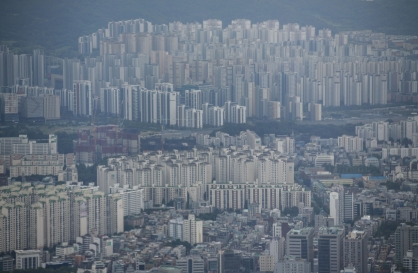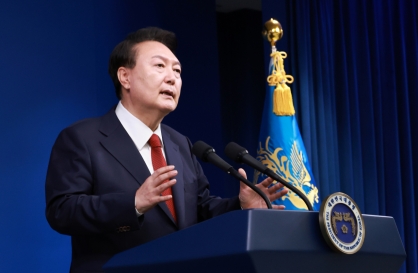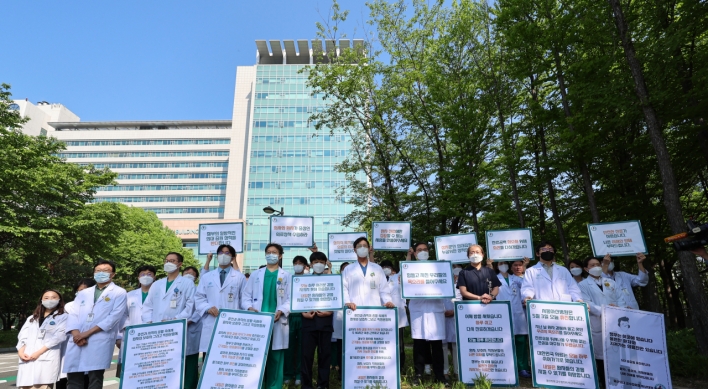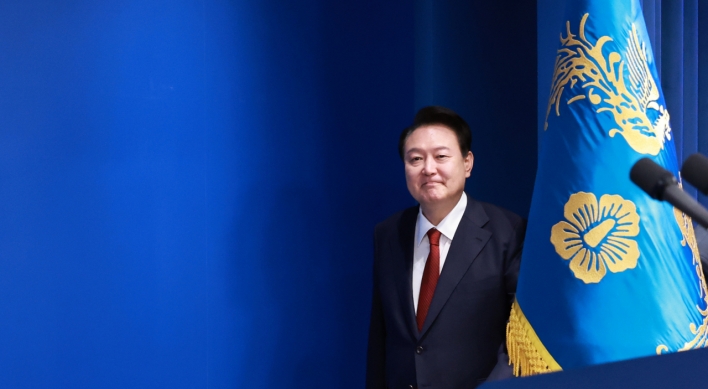Barely a year after the China World Trade Center Tower 3 was unveiled as Beijing’s tallest building at 330 meters, its title as the capital’s champion is slipping away.
Work on a monstrous new skyscraper named China Goblet, or Zhong Guo Zun, starts last Monday, and the wine vessel-shaped building will top 500 meters at 118 storeys when it is completed in five years.
It should be a momentous milestone to be celebrated, yet another tangible sign of China’s rapid urbanization and development. But if the history of skyscrapers is any indicator, the party of excavators, cranes and pile drivers had better hold their engines.
Tall buildings usually spell trouble. Economist Andrew Lawrence formulated the Skyscraper Index 12 years ago, linking construction of the world’s tallest skyscrapers to the onset of economic crises going back to 1873.
Although he meant it half in jest, the coincidences captivated many ― the Empire State Building and the Chrysler Building kicked off the Great Depression of the 1930s; New York’s World Trade Center towers preceded the oil crisis in 1973; and Kuala Lumpur’s Petronas Towers coincided with the 1997 Asian financial crisis.
More recently, the Burj Khalifa, measuring 828 meters, 162 storeys and the world’s tallest, was completed amid Dubai’s debt crisis in late 2009.
It is no wonder that the index has been nicknamed the “skyscraper curse”.
And given the frantic pace in which China is rushing to go taller, it looks like the next prime candidate to fall prey to the curse.
The country already boasts four of the world’s 10 tallest buildings, and is building three more in Shenzhen, Shanghai and Wuhan, which could line up second, third and fourth to the Burj Khalifa when completed by 2016.
Work on a monstrous new skyscraper named China Goblet, or Zhong Guo Zun, starts last Monday, and the wine vessel-shaped building will top 500 meters at 118 storeys when it is completed in five years.
It should be a momentous milestone to be celebrated, yet another tangible sign of China’s rapid urbanization and development. But if the history of skyscrapers is any indicator, the party of excavators, cranes and pile drivers had better hold their engines.
Tall buildings usually spell trouble. Economist Andrew Lawrence formulated the Skyscraper Index 12 years ago, linking construction of the world’s tallest skyscrapers to the onset of economic crises going back to 1873.
Although he meant it half in jest, the coincidences captivated many ― the Empire State Building and the Chrysler Building kicked off the Great Depression of the 1930s; New York’s World Trade Center towers preceded the oil crisis in 1973; and Kuala Lumpur’s Petronas Towers coincided with the 1997 Asian financial crisis.
More recently, the Burj Khalifa, measuring 828 meters, 162 storeys and the world’s tallest, was completed amid Dubai’s debt crisis in late 2009.
It is no wonder that the index has been nicknamed the “skyscraper curse”.
And given the frantic pace in which China is rushing to go taller, it looks like the next prime candidate to fall prey to the curse.
The country already boasts four of the world’s 10 tallest buildings, and is building three more in Shenzhen, Shanghai and Wuhan, which could line up second, third and fourth to the Burj Khalifa when completed by 2016.

The buildings are going up at a blistering pace. China will complete a new skyscraper every three days for the next five years.
That means a total of 800 skyscrapers, quadrupling the current figure of about 200. The current count is already equivalent to that of the United States.
Lawrence is not optimistic China can beat the curse, even though the country is not gunning for the No. 1 title.
The clustering of skyscrapers should raise concerns for investors, he wrote earlier this year.
“While completion of the world’s tallest buildings might symbolize the extent of economic expansion and the height of hubris, skyscraper building booms of geographic concentration have been consistent signals of economic excess; the world’s tallest buildings rarely stand alone,” he wrote.
The frenzied building has many Chinese worried about safety. Netizens wonder if safety has been sacrificed in the haste of construction, much like what happened with the country’s high-speed rail.
When a fire gutted a Shanghai high-rise apartment late last year and killed 58, firefighters had trouble putting it out because of the size of the fire and the height of the building. That building was only 85-meter-tall.
As Professor Yuan Qifeng of Guangzhou’s Sun Yat Sen University said: “China’s fire-fighting measures could barely reach 100 meters.”
Similarly, after the high-profile malfunctioning of an escalator in Beijing’s subway which led to the death of a child in July, many wondered if the lifts in the skyscrapers would measure up.
“Even a small county in China wants to build skyscrapers,” said analyst Qin Youguo from Tsinghua University’s School of Architecture.
“My biggest fear is the maintenance of the lifts in these smaller places. With so many skyscrapers, who will take care of the lifts? Who will maintain and change them?”
But the pace of building is not likely to ease over such concerns. China is obsessed with skyscrapers, Prof Yuan explained, because politicians and businessmen see them as status symbols.
“Many of the people making such decisions today are in their 40s and 50s. They experienced great poverty and the planned economy when they were young. Now, when they have made it, they are especially eager to show off,” he observed.
It is a trend recognized by Lawrence as well. “Overly optimistic developers, a political desire to create ‘statement buildings,’ and banks overly keen to lend,” all lead to the skyscraper curse, he said. The data, he added: “suggests China won’t break the trend.”
By Peh Shing Huei
(The Straits Times)









![[K-pop’s dilemma] Time, profit pressures work against originality](http://res.heraldm.com/phpwas/restmb_idxmake.php?idx=644&simg=/content/image/2024/05/08/20240508050705_0.jpg&u=20240508171126)

![[K-pop’s dilemma] Can K-pop break free from ‘fandom’ model?](http://res.heraldm.com/phpwas/restmb_idxmake.php?idx=644&simg=/content/image/2024/05/09/20240509050541_0.jpg&u=20240509173751)






